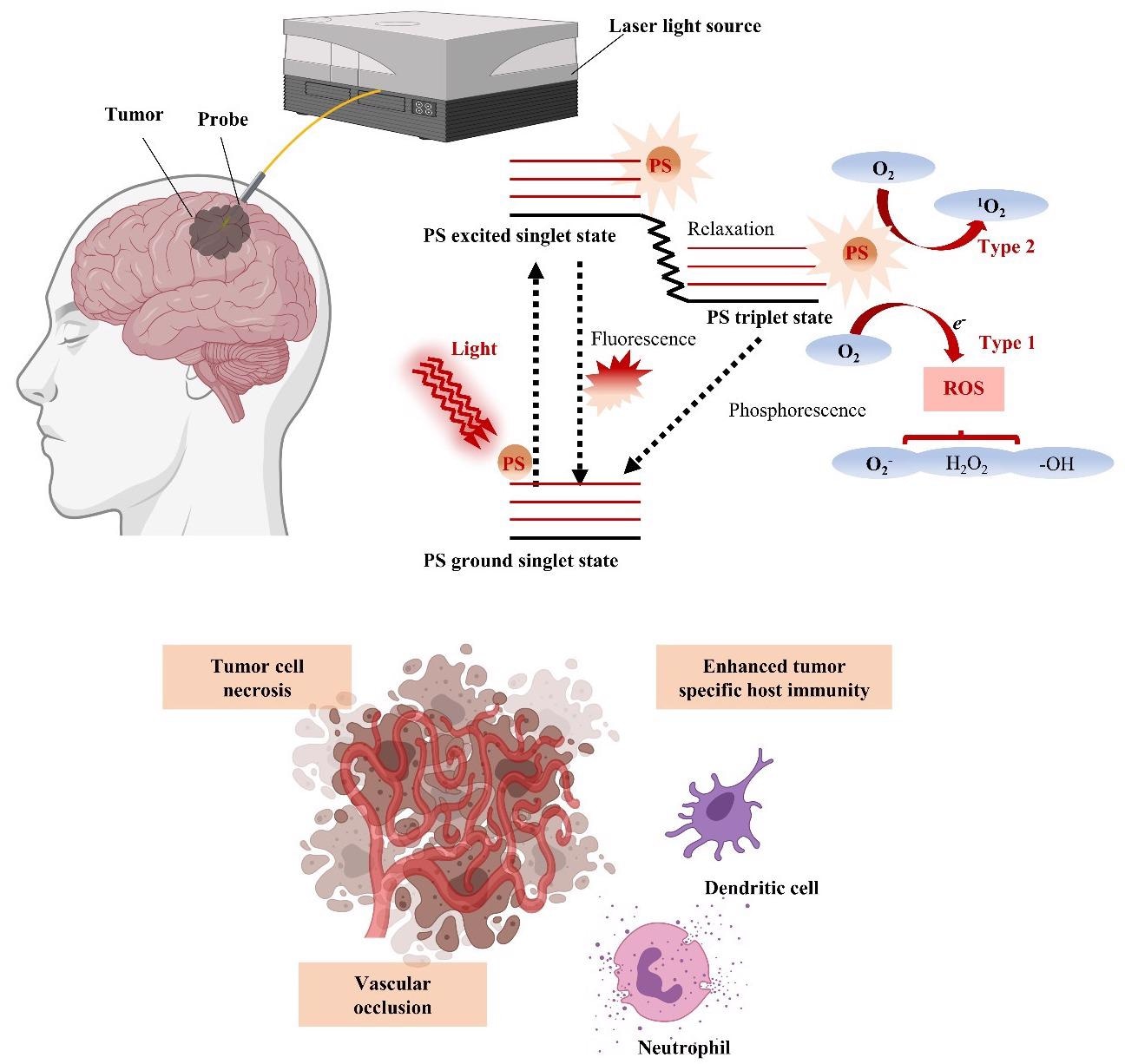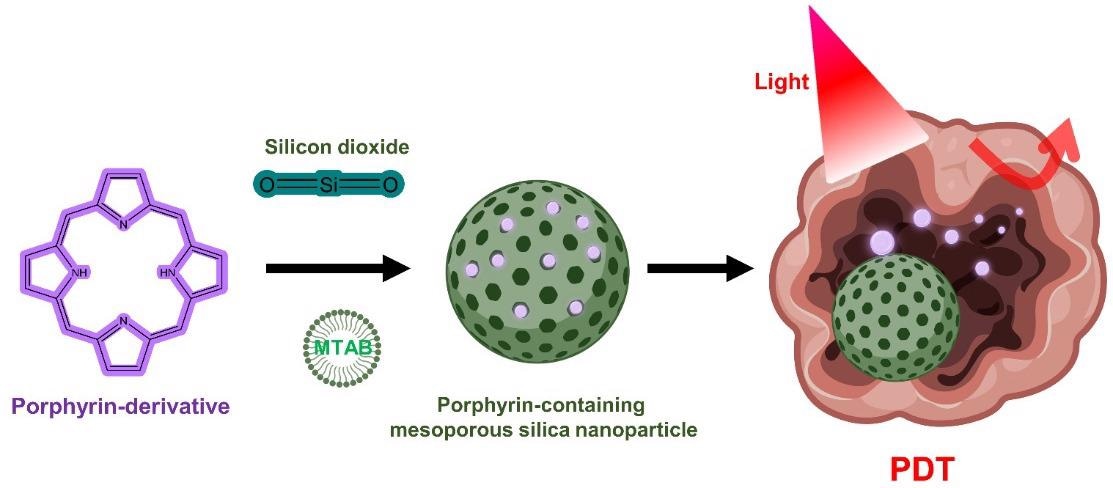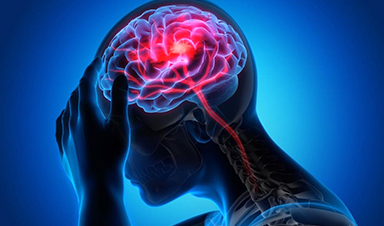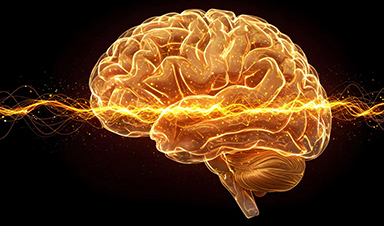A new approach to brain tumor treatment using photodynamic therapy (PDT) with nanotechnology has been explored in a review published in the journal Biomedicines. Unlike radiotherapy and surgical resection, PDT can treat micro-invasive areas and protect critical brain tissue with a high probability of success.
Conventional Methods using PDT
Photodynamic therapy is a type of phototherapy that uses light and sensitizing chemical agents in combination with oxygen molecules to induce cell death. It is a two-stage remedy that incorporates light energy with a medicine (photosensitizer) designed to kill cancer cells and precancerous cells after they have been activated by light.

Schematic illustration of photodynamic therapy (PDT) for GBM treatment with energy diagram of the oxygen dependent response. If the photosensitizer (PS) in the ground singlet state is excited by the light wavelength, then the PS in the excited singlet state can convert to the excited triplet state via intersystem crossing. In the presence of molecular oxygen, the PS in the triplet state can undergo a Type 1 or Type 2 redox reaction, producing reactive oxygen species (ROS) that cause tumor cell necrosis, vascular occlusion, and tumor-specific host immunity. © Kim, H., and Lee, D. (2022).
Photosensitizers are initiated by a specific wavelength energy, which is typically generated by a laser. PDT has been shown to be effective in treating a variety of tumors, including melanoma, squamous cell carcinoma, and multidrug-resistant lung and mammary tumors.
PDT with Its Limited Efficacy
Following other oncology implementations, the interest in PDT as a high-grade glioma diagnosis stems from the essence of tumor growth and the limited efficacy of modern treatment options to this population of patients. Although surgical removal, partial radiation, and chemotherapy are important treatments for intracranial tumors, the obtrusive growth patterns, especially in the cerebrum’s central region, make total resection difficult.
As opposed to surgical resection and radiation, PDT can treat micro-invasive regions while preserving sensitive brain areas. These potential benefits over conventional therapies have been shown to improve results in clinical situations with low overall survival and a high incidence of iatrogenic damage.

Porphyrin-containing mesoporous silica nanoparticles for PDT. © Kim, H., and Lee, D. (2022).
Nanomedicine as Opposed to Conventional Method
The rapidly growing areas of nanotechnology and nanomedicine are yielding nanostructured materials that may overcome the limitations of conventional clinical delivery methods. In fact, the existence of a functioning blood–brain barrier (BBB) inhibits therapeutic delivery to brain malignancies.
Many ways for temporarily opening the BBB by physical impact, including magnetic resonance (MR)-guided focussed ultrasound, have lately been researched to circumvent this barrier; however, this poses a technical problem.
One of the most promising solutions involves the utilization of multifunctional nanomedicines as drug delivery systems.
Advantages of Nanomedicine
The excellent physical and mechanical characteristics of nanocarriers vary based on their material, size, form (mesoporous microstructure, rod shape, particles), and ligand of choice. This enables enhanced brain-targeted administration of PS or therapeutic medicines.
Although many PS nanocapsules are still in the early phases of translation, major improvements in functional nanomedicines relying on BBB crossing have been accomplished in recent years.

Schematic diagram showing the mechanism of photodynamic therapy and bioimaging through long-wavelength to short-wavelength conversion of upconversion nanoparticles (UCNPs). © Kim, H., and Lee, D. (2022).
Another benefit of nanoparticles is that they may boost PS’s poor solubility, extend blood circulation, promote the targeted distribution and cellular absorption, and protect the medication from degradation.
Nanoparticles in PDT for Healing
Although contemporary PDT has considerably improved cancer patients’ quality of life and survival rates, it is critical to further enhance the therapeutic efficacy of nanocarriers to eliminate noticeable side effects.
In this respect, researchers have investigated a variety of nanocarriers, including polymers, liposomes, micelles, inorganic oxide, and new metal nanoparticles, to improve the therapeutic efficiency of photosensitizers.
First and foremost, nanocarriers must be used to effectively transport photosensitizers and singlet oxygen molecules to the target region in an ideal therapeutic range.
PDT is a dynamically evolving profession that is continually on the lookout for innovative technologies. To improve the efficacy and selectivity of PDT, molecular techniques based on nanotechnology are being explored. As a result, several novel organic and inorganic nanoparticles have already been discovered and produced for the targeted administration of photosensitizer medicines.
Nanoparticles may remedy the significant constraints of standard PS medication delivery.
Limitation of this Nanotechnology PDT
However, since intracranial brain tumors emerge from complex structures and distinct organs, such as those bordered by the blood–brain barrier, it is questionable if they can be completely removed using the same strategy as other cancers.
Further research is needed to determine if PDT may be utilized to treat malignant brain cancer that cannot be removed due to its location.
Ongoing research into the numerous PDTs described in this publication will decide whether breakthroughs in cancer research can reduce morbidity and mortality from intracranial malignancy and have the potential to change brain tumor therapy. As a result, although the development of new PDT technology is critical, establishing therapeutic guidelines via large-scale clinical practice should be prioritized.
Future Research in this Nanomedicine to Cure Brain Cancer
With the fast advancements in nanotechnology, researchers now have several synthetic approaches at their disposal to create gold nanoparticles with good shapes and characteristics for PDT applications.
In addition to the numerous physicochemical qualities listed above, the extra various synthesis potential should increase bioavailability and usefulness, indicating gold nanoparticles as a suitable choice for therapeutic cancer therapy.
News
The Brain’s Strange Way of Computing Could Explain Consciousness
Consciousness may emerge not from code, but from the way living brains physically compute. Discussions about consciousness often stall between two deeply rooted viewpoints. One is computational functionalism, which holds that cognition can be [...]
First breathing ‘lung-on-chip’ developed using genetically identical cells
Researchers at the Francis Crick Institute and AlveoliX have developed the first human lung-on-chip model using stem cells taken from only one person. These chips simulate breathing motions and lung disease in an individual, [...]
Cell Membranes May Act Like Tiny Power Generators
Living cells may generate electricity through the natural motion of their membranes. These fast electrical signals could play a role in how cells communicate and sense their surroundings. Scientists have proposed a new theoretical [...]
This Viral RNA Structure Could Lead to a Universal Antiviral Drug
Researchers identify a shared RNA-protein interaction that could lead to broad-spectrum antiviral treatments for enteroviruses. A new study from the University of Maryland, Baltimore County (UMBC), published in Nature Communications, explains how enteroviruses begin reproducing [...]
New study suggests a way to rejuvenate the immune system
Stimulating the liver to produce some of the signals of the thymus can reverse age-related declines in T-cell populations and enhance response to vaccination. As people age, their immune system function declines. T cell [...]
Nerve Damage Can Disrupt Immunity Across the Entire Body
A single nerve injury can quietly reshape the immune system across the entire body. Preclinical research from McGill University suggests that nerve injuries may lead to long-lasting changes in the immune system, and these [...]
Fake Science Is Growing Faster Than Legitimate Research, New Study Warns
New research reveals organized networks linking paper mills, intermediaries, and compromised academic journals Organized scientific fraud is becoming increasingly common, ranging from fabricated research to the buying and selling of authorship and citations, according [...]
Scientists Unlock a New Way to Hear the Brain’s Hidden Language
Scientists can finally hear the brain’s quietest messages—unlocking the hidden code behind how neurons think, decide, and remember. Scientists have created a new protein that can capture the incoming chemical signals received by brain [...]
Does being infected or vaccinated first influence COVID-19 immunity?
A new study analyzing the immune response to COVID-19 in a Catalan cohort of health workers sheds light on an important question: does it matter whether a person was first infected or first vaccinated? [...]
We May Never Know if AI Is Conscious, Says Cambridge Philosopher
As claims about conscious AI grow louder, a Cambridge philosopher argues that we lack the evidence to know whether machines can truly be conscious, let alone morally significant. A philosopher at the University of [...]
AI Helped Scientists Stop a Virus With One Tiny Change
Using AI, researchers identified one tiny molecular interaction that viruses need to infect cells. Disrupting it stopped the virus before infection could begin. Washington State University scientists have uncovered a method to interfere with a key [...]
Deadly Hospital Fungus May Finally Have a Weakness
A deadly, drug-resistant hospital fungus may finally have a weakness—and scientists think they’ve found it. Researchers have identified a genetic process that could open the door to new treatments for a dangerous fungal infection [...]
Fever-Proof Bird Flu Variant Could Fuel the Next Pandemic
Bird flu viruses present a significant risk to humans because they can continue replicating at temperatures higher than a typical fever. Fever is one of the body’s main tools for slowing or stopping viral [...]
What could the future of nanoscience look like?
Society has a lot to thank for nanoscience. From improved health monitoring to reducing the size of electronics, scientists’ ability to delve deeper and better understand chemistry at the nanoscale has opened up numerous [...]
Scientists Melt Cancer’s Hidden “Power Hubs” and Stop Tumor Growth
Researchers discovered that in a rare kidney cancer, RNA builds droplet-like hubs that act as growth control centers inside tumor cells. By engineering a molecular switch to dissolve these hubs, they were able to halt cancer [...]
Platelet-inspired nanoparticles could improve treatment of inflammatory diseases
Scientists have developed platelet-inspired nanoparticles that deliver anti-inflammatory drugs directly to brain-computer interface implants, doubling their effectiveness. Scientists have found a way to improve the performance of brain-computer interface (BCI) electrodes by delivering anti-inflammatory drugs directly [...]





















